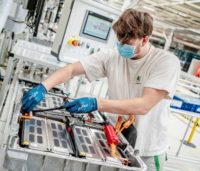GENEVA, Switzerland—Details about watchmaker Tudor's manufacturing operations are scant. However, the company recently allowed a writer from GQ magazine inside one section of its campus to see how Tudor assembles its watches.
Tudor's sizeable assembly floor is sealed and pressurized like an aeroplane to minimize airborne dust, and the space is divided into separate groups of workers that organize their tasks autonomously: at the start of the week they assess how many watches they need to produce and divide the labor accordingly. Each person has a workbench supplied by the same company that kits out Rolex’s assembly rooms.
These are organized in line with a Japanese production methodology known as 5S, which dictates that work stations should be furnished with the minimum necessary tools and that each tool has its own dedicated location: for that reason the drawers are labelled with outlines to show which one goes where.
The technicians have plenty of machinery to help them do their work quickly and accurately: a robot that finds the midnight position on a dial before fitting hands; a device that affixes dial to movement with the correct amount of pressure; electric screwdrivers that apply a specific amount of torque. But human input is vital every step of the way.
After the hands are fixed, for instance, a technician adjusts their relative height by eye and the in-progress watch is inspected repeatedly for dust and flaws. If anyone spots a problem, it is easy to trace back up the production line to identify the person responsible.





